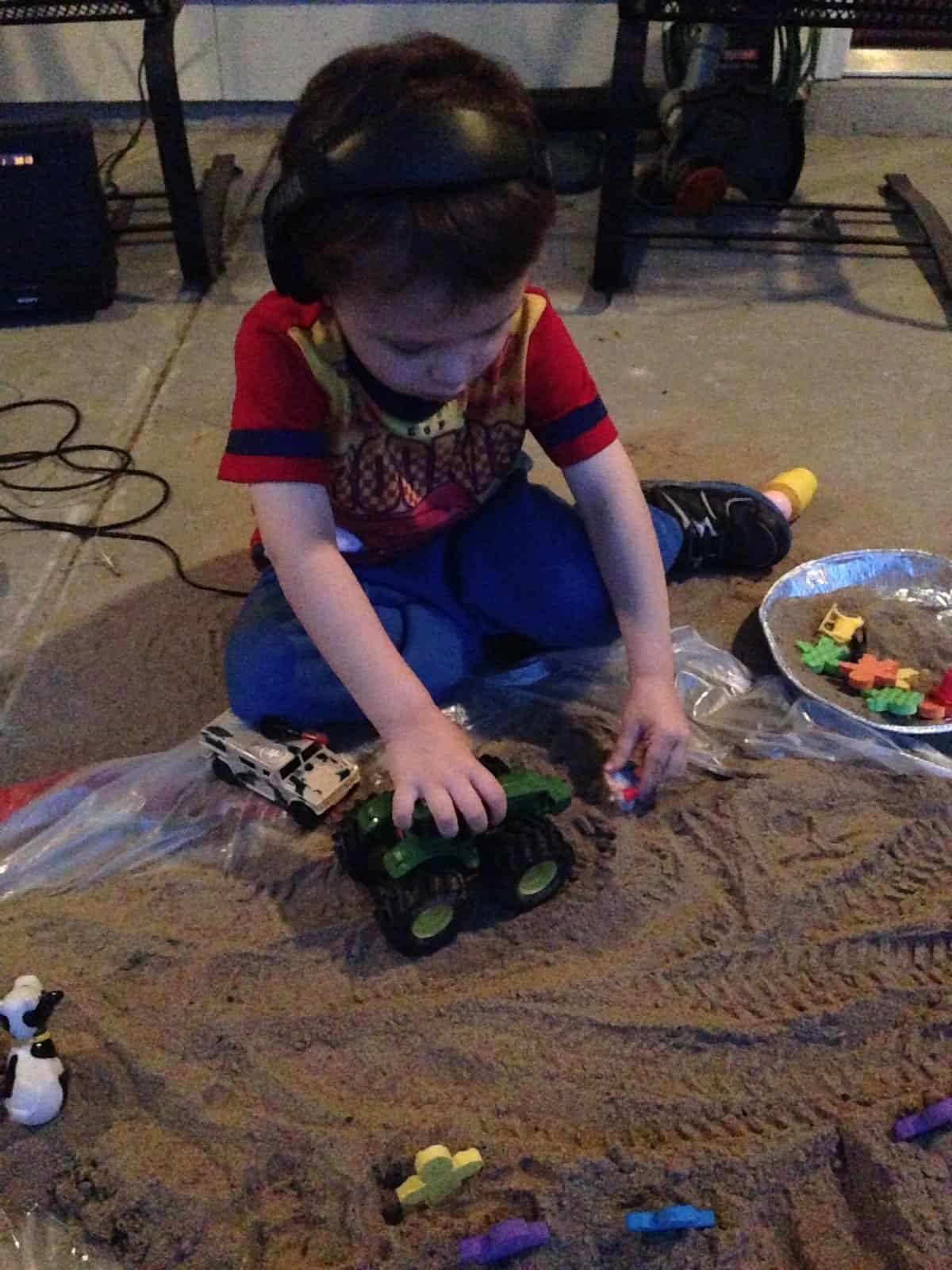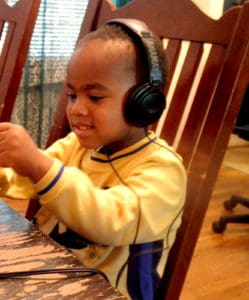What Is Auditory Integration Training?
Auditory Integration Training Equipment
- Instrumental, classical music with all frequencies present at different levels of intensity
- Bone conduction stimulation through headphones placed over ear, stimulates mastoid bones behind ears and cochlear
- Listening programs are returned, because listening program is typically used only once.
- Headphones are provided, so more volume can be put in one ear to stimulate speech processing center
- A high-quality Sony CD player has a boost bass option; finite adjustment of volume; and tracks length of listening time.
- There are 15 listening programs without speech stimulation and 15 listening programs with speech stimulation. All programs consist of twenty hours of listening and decrease the intensity of sound on one or two frequencies.
- There is one listening program that consist of twenty, thirty-minute listening sessions that randomly filters all frequencies.


Program Recommendations
Your Moore Auditory-Visual Questionnaire Report and hearing test results determine the best program for clients. Berard-based, In-home Auditory Integration Training (AIT) is recommended when hearing tests show painful hearing, hearing loss, or sensitivity peaks meeting Dr. Berard’s AIT training protocols.
Cheri recommends activities before, during, and after completion of your auditory integration listening session. Recommended activities are based on your visual processing report and visual observation activity findings. It is important for activities to create safe feelings versus distress.
For example: clients who struggle to track a moving object or experience double vision are discouraged from playing catch.
Activities are chosen to help the client stay focused on music. Activities like bouncing a ball on beat with the music, rocking in rhythm to the music, or listening to identify instruments. Activities keep hands busy while minimizing visual activities.
Adults can plan ahead to complete task like folding clothes, windexing windows, or preparing a dish.
Neurocognitive Changes, Brain Plasticity
Berard Auditory Integration Training uses client’s hearing evaluation, which consist of hearing tests not normally completed during a routine hearing exam. Auditory Integration Training was designed to stimulate the brain, utilizing the brain’s ability to change how sounds are processed in the brain. Today this process is referred to as Brain Plasticity. Every effort is made to ensure clients are able to benefit from Auditory Integration Training and maintain progress.
Moore Auditory Integration Training
Moore Auditory-Visual Integration Training uses hearing test results and the information below to develop each individualized Auditory Integration Training program:
- Research-based OSHA safe listening levels
- Test of Auditory-Visual Skills to screen for central auditory processing skills
- Visual Activities to informally assess visual processing skills
- Moore Auditory-Visual Questionnaire Report
- Pre-care questionnaire to review ENT history and health
- Activities to prepare clients for hearing tests that assess your ability to hear and your ability to tolerate sounds
- Academic history, existing concerns
Comprehensive hearing test results and Ear, Nose, and Throat wellness exam determines if a person is able to benefit from AIT and maintain progress.
- Each client’s middle ear health is evaluated by tests that assess eardrum movement and middle ear bone movements
- Each frequency is tested until the client stops responding to determine the presence of a sensitivity peak, which is filtered during AIT using Dr. Berard’s protocols
- Inner and outer cochlear hairs are tested when there are hearing loss concerns, especially when they coexist with sound intolerance.
Dr. Guy Berard
Auditory Integration Training was developed by Dr. Guy Berard, a practicing Otolaryngologist (Ear, Nose, and Throat physician) in Annecy, France. Dr. Berard discovered that Auditory Integration Training rehabilitated disorders of the auditory system, such as hearing distortion (hyper-acute or asymmetrical hearing). Dr. Berard began to lose his hearing at a young age; thus, out of curiosity used sound therapy to strengthen his auditory neural pathways weakened by hearing loss. His success led to a journey that helped his daughter who had dyslexia and individuals diagnosed with autism, sound sensitivities, and depression. He spent his lifetime developing Berard Auditory Integration Training programs.

Behavioral and Learning Difficulties
After more than 30 years of clinical practice and study, Dr. Berard determined that distortions in hearing or auditory processing difficulties often contributed to behavioral or learning disorders.
Dr. Berard successfully improved tolerance to sounds for individuals diagnosed with attention deficit hyperactive disorder, sensory issues, autism, dyslexia, hyperactivity, learning disabilities, language impairments, pervasive developmental disorders, central auditory processing disorder, hearing loss, attention deficit disorder, and depression.
In a majority of Dr. Berard’s cases, Auditory Integration Training significantly reduced difficulties associated with sound intolerance, academic struggles, and emotional distress. The principles of Auditory Integration Training and a summary of various case histories, complete with copies of individual hearing tests before and after Auditory Integration Training are presented in Dr. Berard’s book, Hearing Equals Behavior which was published in France in 1982. A revised edition was published in 2011, co-authored by Sally Brocket (ISBN # 978-0-615-474526.
 Improvements Reported by Teachers, Parents, and Trainees After Completion of Berard Auditory Integration Training
Improvements Reported by Teachers, Parents, and Trainees After Completion of Berard Auditory Integration Training
- Reduction of hyper-acute and/or painful hearing
- Fewer complaints of sounds causing pain or discomfort
- Looks forward to leaving
house - Reduction in tinnitus (sounds in the ear when it is quiet)
- More appropriate vocal intensity (volume) & social interactions
- Improved speech fluency, vocabulary use
- Improved academic performance (If vision therapy is provided when needed)
- Less impulsivity, restlessness, distractibility, lethargy, irritability
- Increased independence and self-esteem
Research, A Double Blind Study (2016)
Researchers found:
- Evoked potentials tracking auditory neural pathway activity
- Stronger auditory responses
- Decreased behaviors in participants
- Less hyperactivity
- Less irritable
- Fewer repetitive actions
Findings supported earlier research by Edelson and Rimland. 1990’s – 3 Double-Blind Studies with children diagnosed with autism and sound sensitivities found:
- Decreased negative behaviors
- Improved tolerance to sounds
- Stronger P-3 Brain wave activity (auditory processing)
1) Sokhadze, E.M., Casanova, M.F., Tasman, A., and Brockett, S. (2016). Electrophysiological and behavioral outcomes of Berard auditory integration training (AIT) in children with
2) Edelson, S.M., Arin, D., Bauman, M.B., Lukas, S.E., Rudy, J.H., Sholar, M., and Rimland, B. (1999). Focus on Autism and Other Developmental Disabilities, 14, 73-81.
3) Rimland, B., and Edelson, S.M. (1996). Auditory integration training: A pilot study. Journal of Autism and Developmental Disorders, 25, 61-70.
4) Rimland, B., and Edelson, S.M. (1994). The effects of auditory integration training in autism. American Journal of Speech-Language Pathology, 5, 16-24.
FDA Statement On AIT
“Auditory Integration Training remediates impairments in auditory discrimination (sound sensitivity and auditory distortion) associated with Autism, Learning Disabilities, and related disorders – ADD, ADHD, CAPD (Central Auditory Processing Deficits), SPD (Sensory Processing Disorder), Dyslexia.“
Adding Vision Therapy Improves Responses Even Further!
Cheri Moore’s desire to improve clients’ emotional response during Auditory Integration Training resulted in the discovery of a high rate of co-existing visual processing difficulties with sound intolerance, with or without a hearing loss. After some clients experienced increased visual processing difficulties during Auditory Integration Training, like chronic double vision, Cheri Moore collaborated with optometrists specializing in vision therapy to track client’s progress.
Moore Auditory-Visual Training (MAIT) has resulted in improved responses to auditory integration training and vision therapy.
Moore Auditory-Visual Integration Training
Cheri Moore has been helping children and adults improve the brain’s ability to respond to intervention while minimizing negative behavioral responses.
